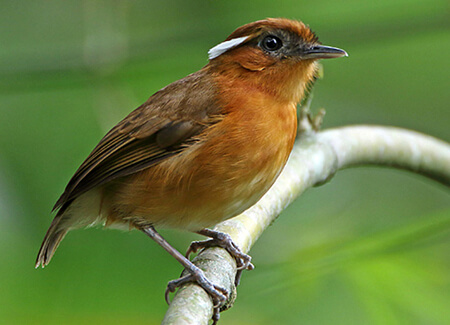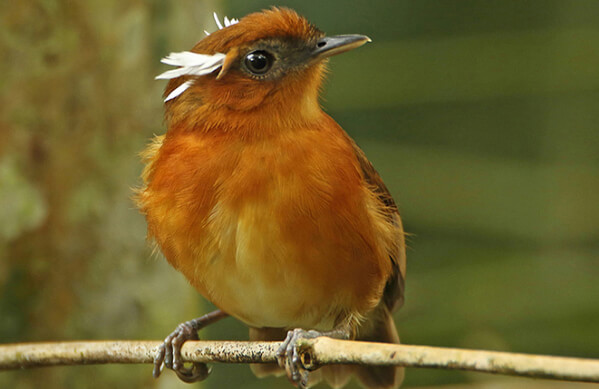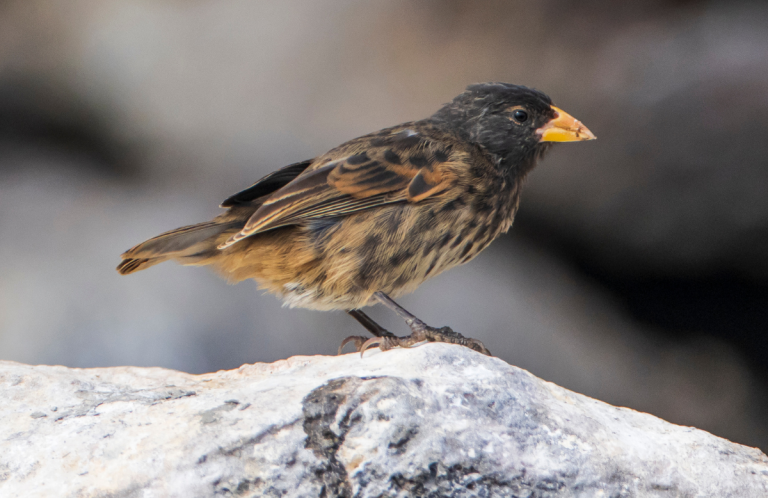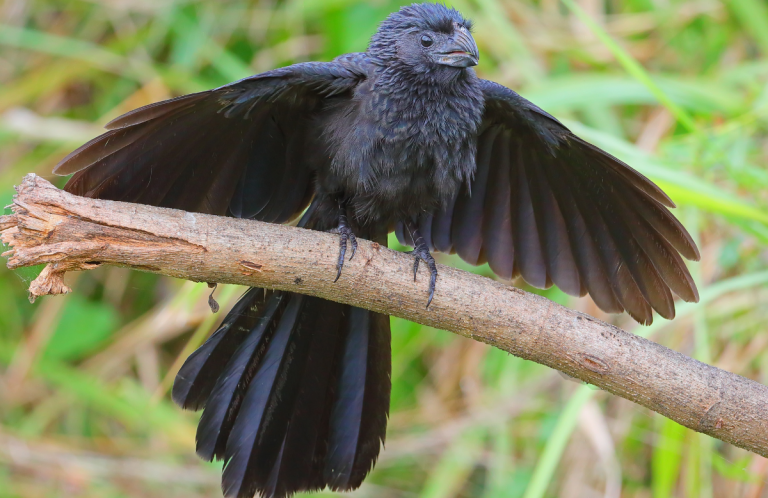 The stub-tailed, long-legged Ceará Gnateater was once considered a subspecies of the more widespread Rufous Gnateater. Differences in voice and morphology recently led to the bird being split into a separate species. Like the endangered Grey-breasted Parakeet, the Ceará Gnateater is only found in isolated mountain forests of northeastern Brazil.
The stub-tailed, long-legged Ceará Gnateater was once considered a subspecies of the more widespread Rufous Gnateater. Differences in voice and morphology recently led to the bird being split into a separate species. Like the endangered Grey-breasted Parakeet, the Ceará Gnateater is only found in isolated mountain forests of northeastern Brazil.
The stocky little bird is sometimes called chupa-dente (literally, spitter) in Portuguese, after its harsh calls. Still considered common, the species occurs in a very restricted range, so is vulnerable to habitat loss.
Gnateater Devotion
The Ceará Gnateater is monogamous, like other gnateaters. Pairs remain together throughout the year, usually avoiding the mixed-species flocks so common in the forest understory.
Both sexes have “ear” tufts that can be erected during territorial or breeding displays. Males' wings have specially modified outer primaries that produce whirring sounds while they are in flight (usually heard in territorial or courtship displays). The male courts the female during low aerial chases, with white ear-tufts erected, piercing calls, and bursts of loud whirring sounds made by its modified wing feathers.
Sign up for ABC's eNews to learn how you can help protect birds
Nesting Near the Ground
This species nests near the ground, often in an open area of the forest understory. The shallow, cup-shaped nest is built in the fork of a low tree or shrub and is extremely well-camouflaged with leaves and twigs. Adult birds also rely on the camouflage of their plumage to avoid detection; they will sit tight on the nest, not flushing until closely approached.
Both male and female take turns incubating the clutch of two eggs. After the eggs hatch, both parents also brood and feed the nestlings, approaching and leaving the nest stealthily to avoid detection by predators.

Ceará Gnateater by Gary Thoburn
Gnateater Needs Habitat
Ceará Gnateaters forage near the forest floor, moving low through the underbrush while constantly flicking their wings. When they spot prey—usually small arthropods such as spiders, caterpillars, or beetles—they quickly hop down to snatch it from the foliage or leaf litter, then jump back up into the dense understory.
Although gnateaters are common in the right habitat, the Ceará Gnateater is only found in northeastern Brazil. ABC is supporting the work of AQUASIS in the Baturité mountains where the Ceará Gnateater occurs; in fact, ABC staff recently met with staff in this area, where our work is focused on the Grey-breasted Parakeet. Aquasis hopes to move a healthy population of parakeets from this location to a nearby protected area, where a new population can be established to help ensure a future for the species.
AQUASIS is also helping landowners create reserves to protect forest habitat that will benefit the parakeet, gnateater, and many other rare and endemic birds.
Donate to help conserve habitat for this Brazilian bird!



















































